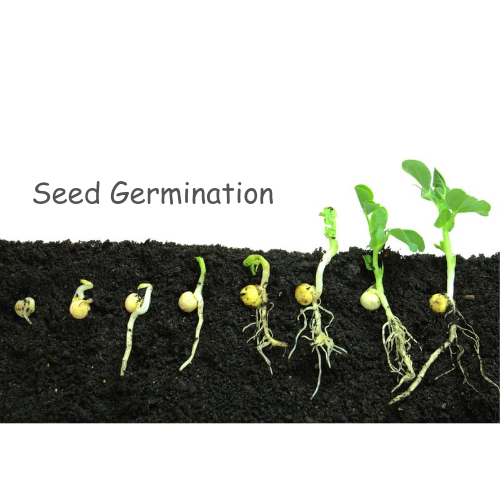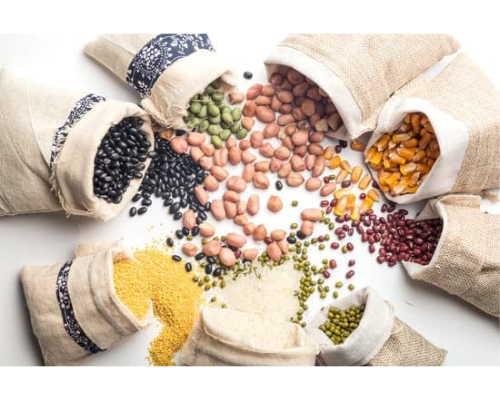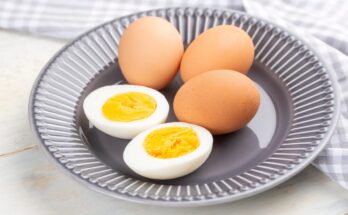A grain is a living biological product which germinates and respires also. The respiration process in the grain is externally manifested by the decrease in dry weight, utilisation of oxygen, evolution of carbon dioxide and release of heat. The rate of respiration is dependent upon moisture content and temperature of the grain. The rate of respiration of paddy increases sharply (at 25° C) at 14 to 15 percent moisture content, which is called the critical point. On the other hand, the rate of respiration increases with the increase of temperature to 40° C. Above this temperature, the viability of the grain as well as the rate of respiration decreases significantly.

Structure of Grains
Wheat consist mainly of pericarp, seed coat, aleurone layer, germ and endosperm whereas oats, barley, paddy, pulses and some other crops consist not only of the above five parts but an outer husk cover also. The husk consists of strongly lignified floral integuments. The husk reduces the rate of drying significantly.
The embryo or germ is the principal part of the seed. All tissues of the germ consist of living cells that are very sensitive to heat. The endosperm, which fills the whole inner part of the seed consists of thin-walled cells, filled with protoplasm and starch granules and serves as a kind of receptacle for reserve foodstuff for the developing embryo.
Chemical Composition of Grains
The grain is composed of both organic and inorganic substances, such as carbohydrates, proteins, vitamins, fats, ash, water, mineral salts, and enzymes. Paddy, corn, wheat, and buck wheat seeds are specially rich in carbohydrates, whereas legumes are rich in proteins and oil seeds rich in oils.
Generally, pericarp (and floral integuments also) contains cellulose, pentosan, and ash, the aleurone layer contains mainly albumin and fat. The endosperm contains the highest amount of carbohydrate in the form of starch, small amount of reserve protein and a very little amount of ash and cellulose whereas the germ contains the highest amount of fat, protein and a small amount of carbohydrate in the form of sugars and a large amount of enzyme.
Effects of temperature on the quality of grain-
1. Proteins
The proteins present in cereal grains and in flour are hydrophillic colloids. The capacity of flour proteins to swell plays an important role in the preparation of dough. At temperatures above 50° C denaturation and even coagulation of proteins take place. As a result, the water absorbing capacity of the proteins and their capacity for swelling decreases.
2. Starch
Starch is insoluble in cold water. It swells in hot water. Up to a temperature of 60° C, the quality of starch does not change appreciably. With a further increase in temperature, particularly above 70° C, and especially in the presence of high moisture in the grain, gelatinisation and partial conversion of starch to dextrin take place. In addition, a partial caramelisation of sugars with the formation of caramel may take place, which causes deterioration in colour of the product.
3. Fats
Fats are insoluble in water. Compared to albumins and starch, fats are more heat resistant. But at temperatures above 70° C, fats may also undergo a partial decomposition, resulting in an increase of acid numbers.
In the range of temperatures from 40 to 45° C, the rate of enzymatic activity on fats increases with the increase of moisture and temperature. With a further rise of temperature, the enzymatic activity begins to decrease, and at temperatures between 80 and 100° C, the enzymes are completely inactivated.
4. Vitamins
The heat sensitive B-vitamins present in the germ and aleurone layer are destroyed at high temperature.





As I site possessor I believe the content material here is rattling magnificent , appreciate it for your hard work. You should keep it up forever! Best of luck.
I have been reading out a few of your articles and i can claim pretty clever stuff. I will make sure to bookmark your blog.
Great post. I am facing a couple of these problems.
I have recently started a site, the info you provide on this web site has helped me greatly. Thanks for all of your time & work.
Awsome info and right to the point. I am not sure if this is in fact the best place to ask but do you folks have any thoughts on where to employ some professional writers? Thx 🙂
I like what you guys are up too. Such smart work and reporting! Carry on the superb works guys I have incorporated you guys to my blogroll. I think it will improve the value of my site 🙂